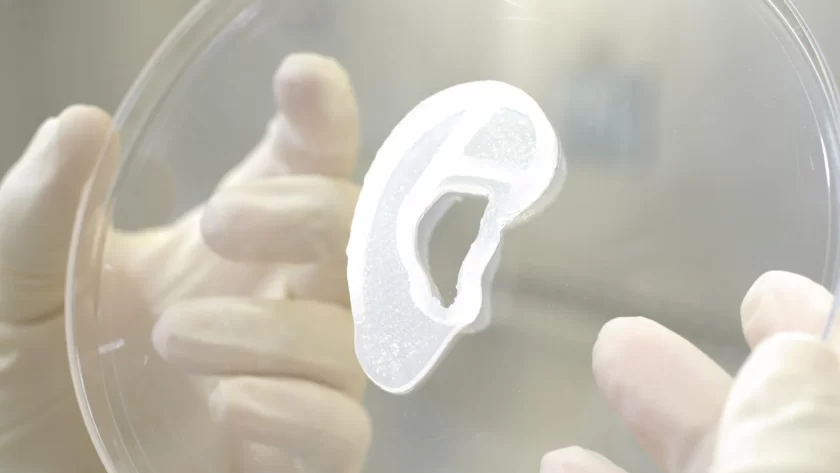Technology to utilize 3D printing technology to make substitute body parts for transplants has existed for at least half a decade, complete with the aim of giving people reconstructive choice that is not limited to prosthesis. Before now, 3D printing body parts are a relatively basic process and produce products that have several significant limitations. This is why 3DBio therapy succeeded in grafting a 3D-implant-printed ear which he called “aurinovo”-the patient is a kind of big problem.
But there is more than that. 3DBIO not only started a human transplant test with biological implants printed 3D and that also created implants using their own patient cells. By using cells taken from the patient’s own ear cartilage, this new type of transplant can produce more compatible implants that require far less invasive surgery to collect early cells. Clinical trials are still ongoing, so whether this will be a definite improvement.
The 3D print ear that you see above is intended for patients suffering from a rare congenital condition known as micro, which prevents one or both ears to form fully. A 20 -year -old woman who has become the first recipient of Aurinovo’s implant was born with a less developed right ear. The new implant will require some re -formation through follow -up operations, which are common with the same implant, but the team hopes to expand human trials to include more patients between ages six and 25 during the study that took place this year.
Why 3D print ear cartilage?
The current ear planting technique uses synthetic or ribs for construction, and both techniques have a potential warning list. As suggested by 3DBio, rigid -artificial implants, “Don’t feel like a human ear,” and can be destroyed on impact. Synthetic implants work with a less invasive process for patients rather than working with ribs, but they still need a little graft of the skin from the scalp, carry the risk of infection due to non-biological materials, and can change color or position shifting over time.
They also suggested that the reconstruction of the ribs of ribs ribs, “don’t feel like a human ear,” and can be uncomfortable. When harvesting cartilage from patients to implants greatly reduce the chances of the last ear graft will be rejected by the body, taking cells from the ribs is the process involved. The current technique requires two separate procedures, each of which can take several hours. This process requires harvesting material from at least three separate ribs and can cause chest shape abnormalities.
Aurinovo implants are made by first collecting cartilage cells from the patient’s ears, growing these cells to make printed materials, then finally print implants that are designed to be seen and feel like the ears of other patients, which are fully developed. When and if approved for routine use, this process is expected to work with outpatient procedures so that anyone who receives implants does not need to live in hospitals overnight (which is less stressed and cheaper than alternatives today). In addition, softer and more natural feelings will make the implant more comfortable and less susceptible to damage from external forces.





